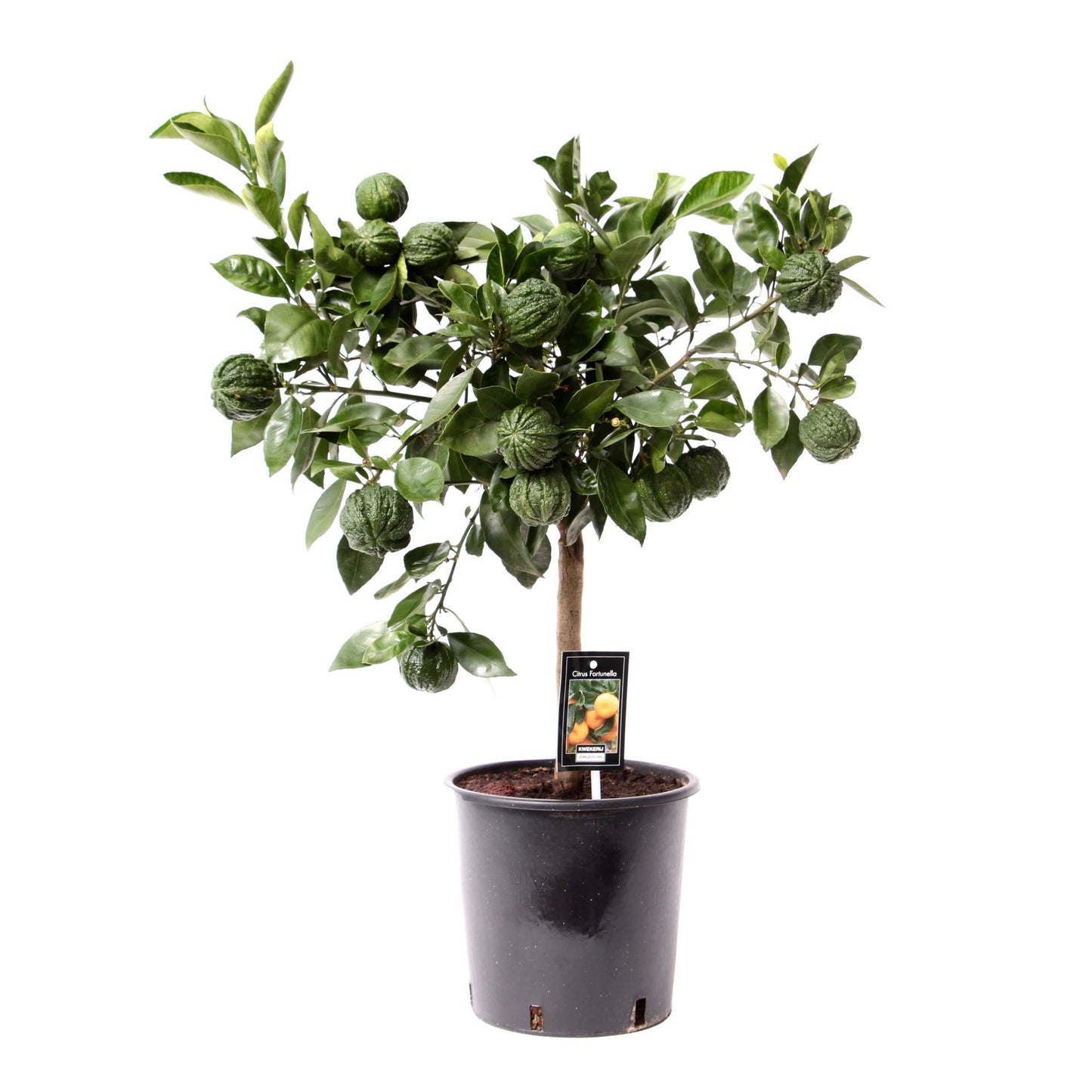برتقال مجعد
برتقال مجعد
Couldn't load pickup availability
Citrofortunella x microcarpa Canaliculata
Growing Citrofortunella x microcarpa ‘Canaliculata,’ commonly known as kumquat, can be a delightful experience. Here’s a guide on how to grow this specific variety:
Materials You’ll Need:
• Kumquat tree sapling (Citrofortunella x microcarpa ‘Canaliculata’)
• Suitable location (sunny and well-draining)
• Well-draining soil
• Mulch
• Fertilizer formulated for citrus trees
• Watering can or hose
• Pruning shears (for maintenance)
Steps for Growing Citrofortunella x microcarpa ‘Canaliculata’ (Kumquat):
1. Select a Location: Choose a sunny location for your kumquat tree, as it requires full sun for optimal growth and fruit production. Ensure the soil is well-draining.
2. Planting: Plant your kumquat tree in a hole that is about the same depth as the root ball but twice as wide. Space multiple trees according to recommendations, typically several feet apart.
3. Soil Preparation: Kumquats prefer well-draining soil with a slightly acidic to neutral pH (around 6.0 to 7.0). Amend the soil with organic matter like compost to enhance fertility and drainage.
4. Mulch: Apply a layer of organic mulch around the base of the tree to conserve soil moisture, regulate temperature, and suppress weeds. Keep the mulch away from the trunk to prevent rot.
5. Watering: Keep the soil consistently moist but not waterlogged. Water when the top inch of soil feels dry. Kumquats benefit from regular watering, especially during dry spells.
6. Fertilization: Feed your kumquat tree with a balanced fertilizer formulated for citrus trees. Apply fertilizer in spring and late summer according to the package instructions.
7. Pruning and Maintenance: Prune your kumquat tree to shape it, remove dead or crossing branches, and promote good air circulation. Pruning can also help control the size and shape of the tree.
8. Pest and Disease Management: Monitor for common citrus pests such as aphids, scale, and mites. Treat with insecticidal soap or neem oil if needed. Keep an eye out for diseases like citrus canker or fungal infections and address them promptly.
9. Harvesting: Kumquats are typically harvested when they reach full color and are firm to the touch. You can eat them whole, including the peel, as they have a sweet and tangy flavor.
Growing Citrofortunella x microcarpa ‘Canaliculata’ can be a rewarding experience, and with proper care, you can enjoy fresh, homegrown kumquats from your own tree. Adjust care practices based on your local conditions, and consult with local experts for advice tailored to your region.
Share



